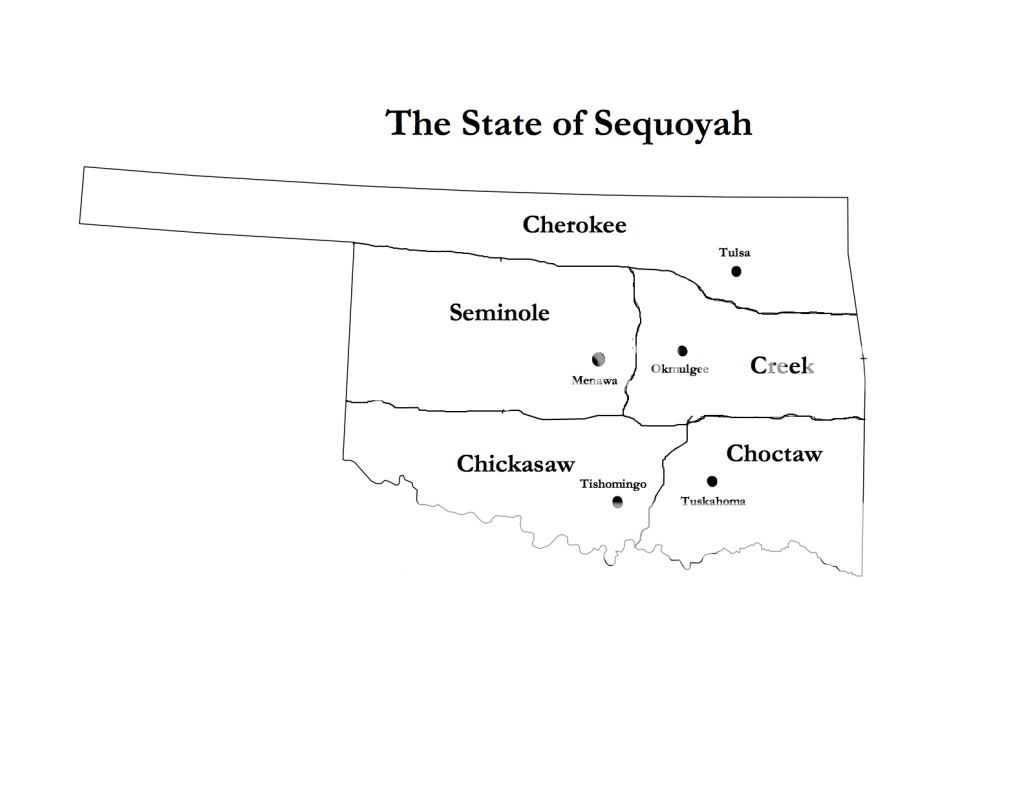History of Sequoyah
The history of America's natives is a long and sad; perhaps no episode more so than the trail of tears. In the 1830s the US president Andrew Jackson evicted the Five Civilized Tribes (Cherokee, Creek, Choctaw, Chickasaw, and Seminole) from the southeast, forcing to walk to the Indian territory, north of Texas. Several thousand men, women, and children died along the way.
For a time they were permitted to live in relative seclusion, but the steady westward march of the American frontier threatened their new home. White settlers pouring into Kansas and Nebraska eyed the lands to the south greedily.
When the War of Secession erupted, the Indian leaders, remembering Jackson, eagerly signed treaties of alliance with the new Confederate government and joined its cause. The Cherokee general Stand Watie became the most prominent among them, becoming chief of his nation when the pro-Union incumbent fled in 1862. While Camp Hill and Corinth ended major combat east of the Mississippi, fighting in the West continued for some months in 1863. In May of that year, a combined force under Watie and Edmund Kirby Smith defeated a larger Union force at Fort Gibson, securing the Indian Territory for the Confederacy. (Similar efforts to seize the so-called Arizona Territory for the South failed.)
Under the Confederates, the Indian Territory maintained a unique status. Richmond kept it closed to white settlement, and did not apppoint a governor. Instead, each of the five nations was responsible for keeping law and order within its borders. (Members of other Indian tribes living within the territory, such as Kiowas and Comanches, did not receive such status, and had to live on land governed by one of the Five Tribes.)
The Confederates acceded to such an arrangement because Indian warriors made willing guerrillas, often traveling into Kansas and Missouri to bushwhack. In turn, the US encouraged Indians living in the North to retaliate, keeping this part of the west in turmoil into the 20th century.
While pressure to open the Territory eased, it never entirely subsided. The rapid growth of the petroleum industry there in the late 1890s and early 1900s only accelerated the problem. Concerned that the government would grant odrilling rights to outside oil companies, the often fractious Tribes banded together and petitioned Congress for statehood beginning in the 1896. This first proposal was rejected, and the Tribes undertook to reorganize the government to better fit with the modern conception of a state. A territorial governor, Ned Christie, was elected, and a statewide legislature organized. (Because none of the tribes would agree to place the state capital on the land of a rival, they compromised for providing that the governor and legislature would ride the circuit, so to speak, sitting in each of the five county seats in turn.) The new Radical Liberal party was supportive of statehood, and enough Whigs joined on to make Sequoyah (a Cherokee who had virtually eliminated illiteracy in the Five Civilized Tribes during the early 19th century) a state in 1902. Conveniently, it sent five Representatives to Congress, one for each Tribe. It was the last state admitted to the Confederacy.

Sequoyah, like Sonora, Chihuahua, Louisiana, and Cuba, all states that differed from the Confederate mainstream, became Radical Liberal strongholds. In the three presidential elections it participated in, Sequoyah voted for the Rad Lib nominee each time. The Whig party tended to be strongest in the white minority, and the Cherokee, under whose land the lion's share of the oil was located.
During the Great War, Sequoyah (or at least its oil) was a priority target of the United States Army. Confederate planners, unfortunately for its residents, did not take the state as seriously - only the 1st Sequoyah regiment was stattioned there permanently, along with the tribal militias, and during mobilization a single reserve division was rushed to the front. Unsurprisingly, the US Army maintained steady progress there, where the endless, flat terrain, prevented the outnumbered Confederates from building strong defensive lines. By the end of 1916, the US had pushed all the way to the Red River, the border with the Texas.
In 1918, Sequoyah was formally transferred to the United States. But unlike Kentucky and the new state of Houston, it was not given membership in the US, and Philadelphia lifted the ban on white settlement. US citizens who agreed to move to the Sequoyah territory were paid a stipend for a number of months. Due to resistance from the native population, the Army was constantly kept on hand. Martial law was declared on several occasions - in 1918-1919, 1925-1926, 1930-1931, and off and on from 1934 onwards. This is a much better record than Utah, which was under martial law continuously.
Pursuant to the Richmond Agreement between Al Smith and Jake Featherston, Sequoyah, along with Kentucky and Houston, held a plebiscite on returning to the US in 1941. Unlike those two states, it voted to remain in the US, no doubt due to immigration from the north. When Jake Featherston nevertheless launched the Second Great War in North America a few months later, Sequoyah was not a major front. Instead, Confederate guerrillas bushwhacked American troops and sabotaged the oil fields, leading to indiscriminate resprisals from the US Army.
War deaths and emigration have drastically shrunk the prewar population. In the mid 1940s the US deported several thousand residents, mostly American Indians. This "Second Trail of Tears" received much less notice than the exile of several thousand Mormons to Molokai in the Sandwich Islands. Most of the Indians have moved to the Southern territories or the Empire of Mexico. Sequoyah, along with Haiti, has been proposed as a "homeland" for Negroes in North America.
The current territorial governor is Francis Sayre, a former professor of President Dewey at Harvard Law. The local Army contingent is commanded by Joseph McNarney.
